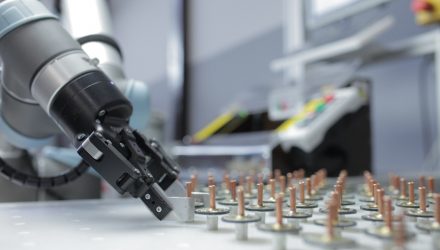Due to the complexity of the supply chain, human workers will almost certainly always play an important part. Robots will be used for those tasks which are dull, dirty, and dangerous. We have seen this happen in many other industries.
The DHL Robotics In Logistics Report paints a picture of how robots will be used in the three main parts of the supply chain:
1. Distribution Centers
Scalability is the key to the future of distribution centers.
Robotic applications in distribution centers include packing, automated surveillance, automated inventory management, and picking.
Collaborative robots are likely to become important for tasks like co-packing where humans and robots work in the same areas on different steps in the packing process. Other robots which are predicted to be used are swarms, drones, and surveillance robots. Exoskeletons, which we saw a few of at Automatica 2018, may be used to help people pick up heavy loads.
2. Sorting Centers
Sorting centers are the midpoint between the huge distribution centers and the end customer. The key to these will be 24 Hour operation, allowing a continuous flow of goods from supplier to customer.
Robotic applications in sorting centers include autonomous maneuvering, container loading/unloading, autonomous stock replenishment, and self-driving trucks.
We often see companies using cobots to achieve close to 24 hour operation. For example, our case study of Walt Machine Inc shows how they were able to double daily production by running their robots for 15-20 hours a day.
3. Last Mile Delivery
Last-mile delivery is probably the most well-known robotic application among the general public.
Robotic applications include automated aerial delivery (drone delivery), mobile parcel stations, automated sorting, and robot-assisted 2-man handling.
Because it is so popular in the media, people probably think that last-mile robotic delivery is closer to being a reality than the other application technologies already listed. However, it seems likely that businesses will adopt robots into this area much more slowly than they will in the other areas. Adding a cobot in your sorting center, for example, is much easier than convincing your customers to accept drone deliveries.
As Tom Bonkenburg, author of the DHL report, says “Exciting as it is, robotics technology seems to be arriving slowly but surely in cautious and well-considered stages”
Related: Waymo Partners with Walmart, Others for Driverless Rides
For more trends in artificial intelligence, visit the Robotics & AI Channel.
